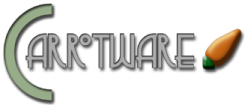Why use CarrotCake when there are loads of established Dot Net CMS applications available? 
Simple, many of these CMSs try to be all things to all people. This app delivers a lightweight framework to host content, with slots that allow easy integration of custom code. It is primarily a content management system that provides capability to easily incorporate custom programming.
If you aren't looking to have an event calendar (a basic one is available as one of the sample widgets), forum, email campaign etc. completely embedded in your main website (either giving you no choice or paying for a feature that you don't need because you have an existing product that you are happy with), this is for you. For anyone who has been thinking of using Sitefinity for a modest website and cringed at spending $2000+ and all you really wanted was a visual way to manage your website content, try CarrotCake CMS. If you have thought of using DotNetNuke but can't make heads or tails of how to slice up your HTML/CSS markup into the requisite user control components, this is for you.
CarrotCake will work on most shared hosting as it uses stock .Net 3.5 and will work under medium trust, only a minor subset of features won't be available, such as importing images from a WordPress blog when importing WordPress XML, however, you can always run the site on a local system (your desktop) and then simply upload the images after obtaining them.

If you have created a user control, creating a CarrotCake widget will be familiar. We have implemented the widgets to be primarily user controls (though server controls can also be loaded) with configuration files to enumerate them. We have followed this same pattern for the admin. Rather than force users into adding esoteric interfaces when all you want wanted is to have an admin dashboard for that registration form widget you added on your homepage. While interfaces are provided for easier integration between your code and the CMS, they are recommended, though not required.
When using the content editor to manage your web pages, you are not forced into using a particular dot net Ajax control set, all page edits are passed through jQuery AJAX calls which gives you the freedom to use Telerik AJAX controls if you want to use them.
The navigation server controls that are baked into the CMS are using the UL/LI paradigm, so you could even grab your favorite WordPress template, save a post as HTML, and begin swapping out navigation elements and have your website look like your WP blog in short order. There is also a template-able version of the top two-level navigation menu that allows the user to provide additional HTML markup if a template wants more than just list items and anchor tags.
